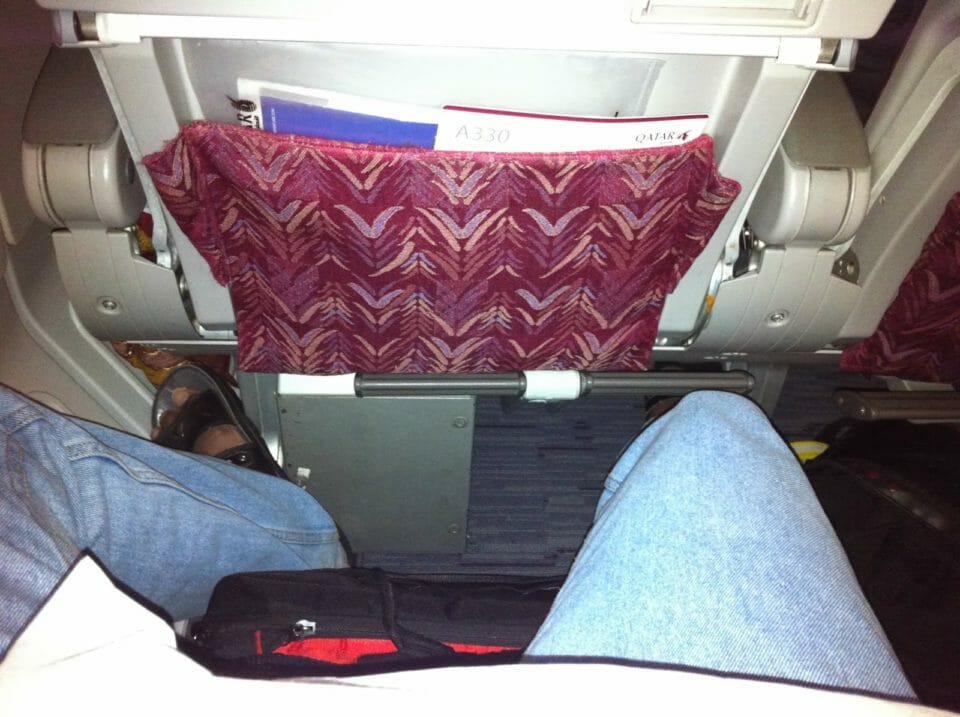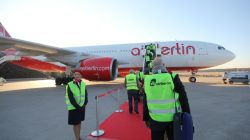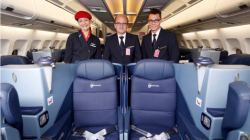It’s been awhile since I’ve done a travel advice article, so now seemed the right time after my recent experience going to India and back. I had the (mis)fortune of having to do this trip in coach, as without the benefit of an expense account, dropping 10 grand on a pair of airplane tickets isn’t exactly practical. As you can see from the photo above, flying in steerage, as many frequent fliers derisively refer to the back of the plane, isn’t the most comfortable experience. However, you can make the experience a little more tolerable with some advance planning. Check out my tips after the jump.
A couple of things to remember
Check SeatGuru for seating options
So what seat should I choose?
seats in advance, or at least for what they deem to be “preferred” seats (usually aisles and windows near the front of the coach cabin and/or bulkheads and exit rows).
common example of this is the new trend of putting 10 seats per row in a 777, instead of the recommended configuration of 9 seats. The extra seat results in both constricted seat width
and narrower aisles. If you have no choice but to fly on an airplane in this configuration, beware of aisle seats. The likelihood of getting repeatedly bumped into by drink carts
or woozy passengers is much higher due to the narrow aisles. I willingly pay extra to avoid airlines that configure their seats in this manner, though unfortunately, this is becoming
increasingly difficult as more and more airlines want the extra revenue from the extra seat in each row.
bulkhead have no seats behind, so you can recline to your heart’s content without disturbing anybody. Seats behind a bulkhead usually have extra legroom, since there’s not another row
of seats in front. Exit rows typically have more legroom.
of view. Ditto for seats behind a bulkhead, and these have the added disadvantage of having no underseat storage, meaning all of your carry-ons have to go in an overhead bin for takeoff
and landing (one reason I don’t like these seats). Plus, these rows usually house the bassinets, and therefore attract passengers traveling with infants, which may or not be a problem
for some. And while exit row seats have more legroom, they sometimes have limited or no recline. Sitting bolt upright for 12 hours might not be your idea of a good time.
On a large, fully loaded airplane like a 747 or A380, the waiting time in line at immigration can easily be 30 minutes more at the back of the plane compared to the front.
service with dedicated check-in and special meals, such as on Air France or British Airways, or just a plain coach seat with extra legroom and maybe more width, such as American’s Main Cabin
Extra or United’s Economy Plus. Either way, these seats typically provide 4-6 inches of extra legroom compared to a regular coach seat. British Airways World Traveler Plus can run
an extra $500-1,500 per seat round trip compared to regular World Traveler, whereas AA’s Main Cabin Extra can run anywhere from $19 to a few hundred extra each way depending on flight length
(note that U.S. carriers typically waive fees for these seats for “elite” members of their frequent flier programs). It can get expensive for sure, but it’s still considerably cheaper
than business class.





